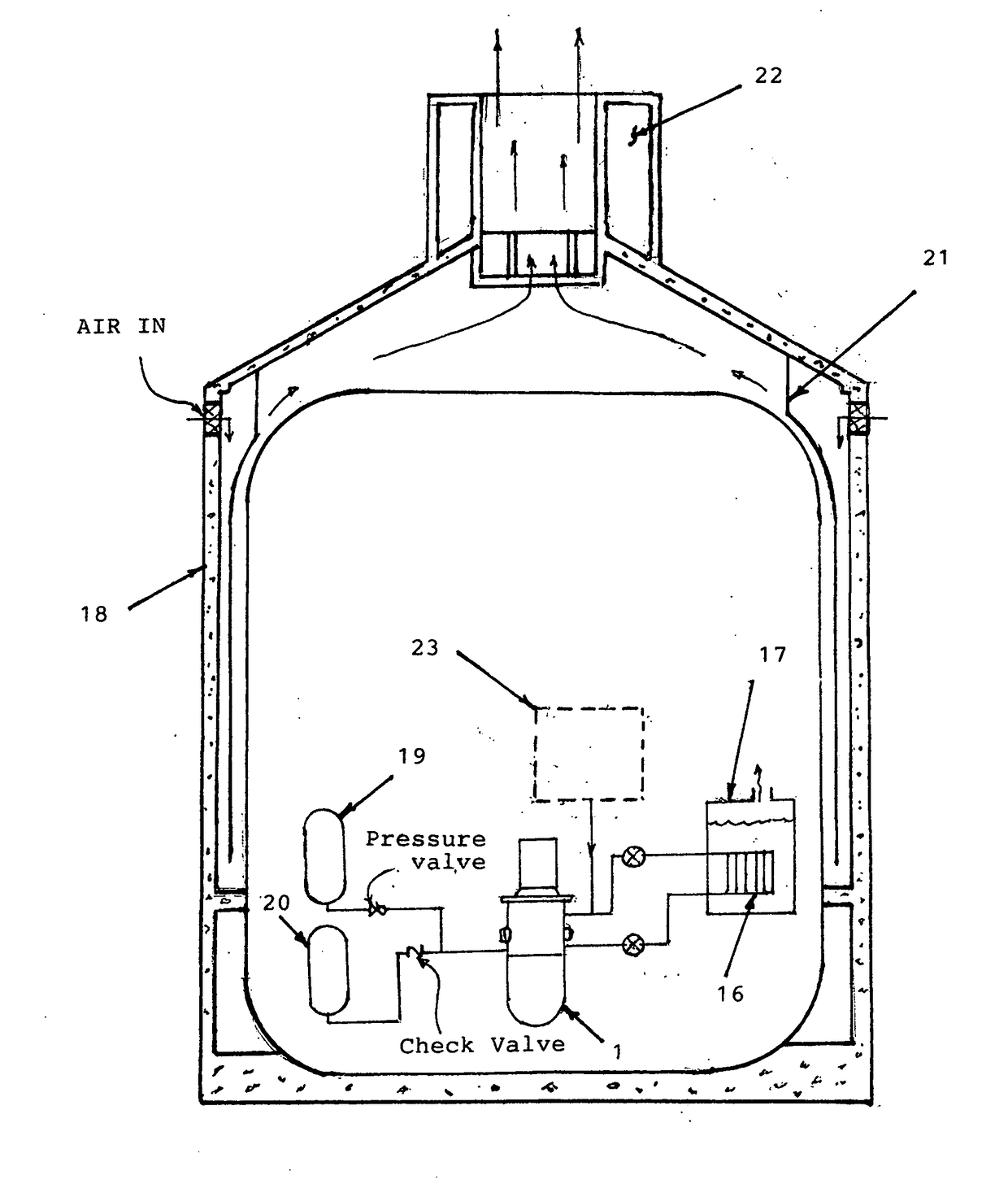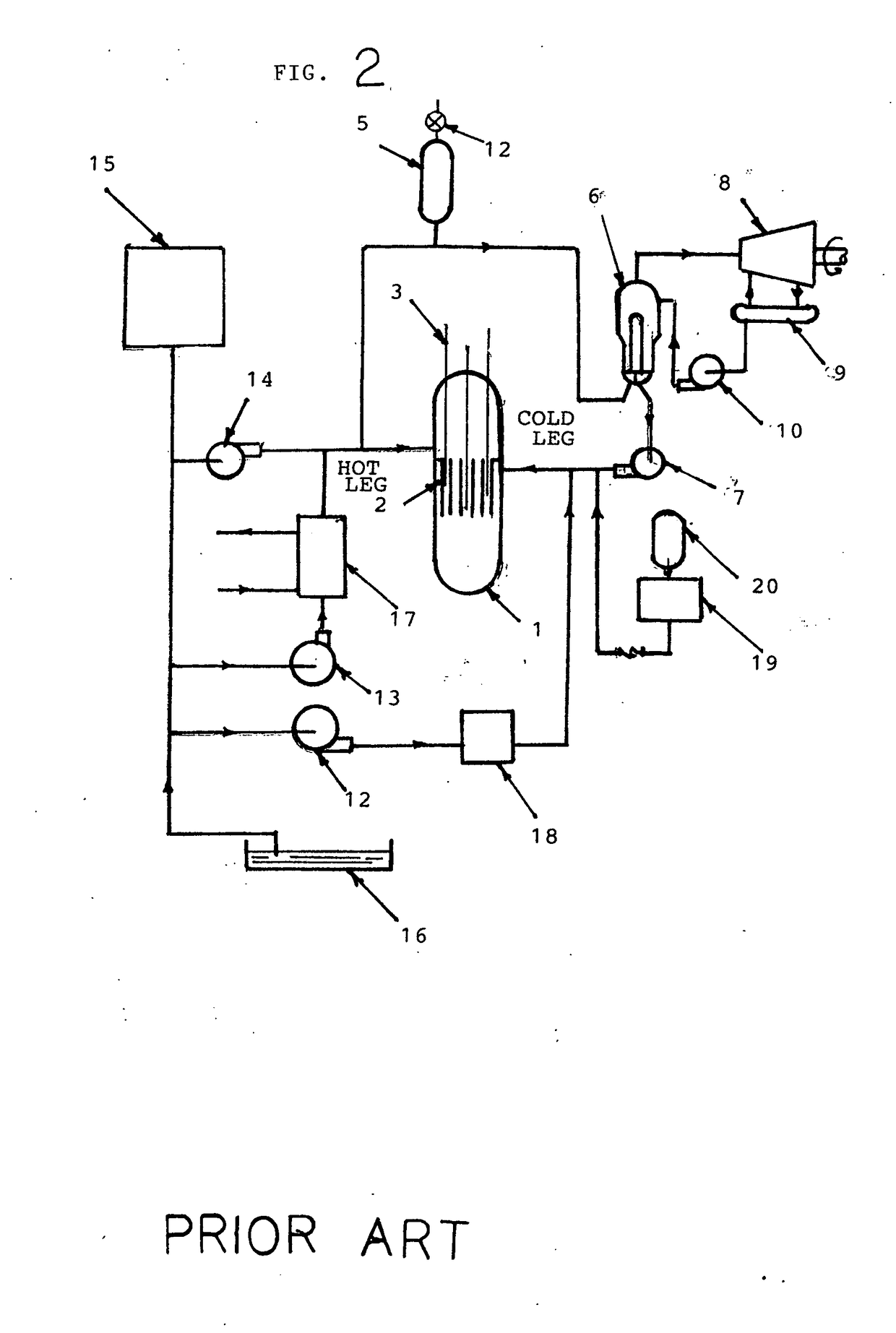Post-meltdown nuclear power plant recovery system
a nuclear power plant and recovery system technology, applied in nuclear reactors, nuclear elements, greenhouse gas reduction, etc., can solve the problems of increasing the total amount of radioactive materials, affecting the operation of nuclear reactors, so as to reduce the damage to personnel and the environment.
- Summary
- Abstract
- Description
- Claims
- Application Information
AI Technical Summary
Benefits of technology
Problems solved by technology
Method used
Image
Examples
Embodiment Construction
[0046](4.1) If the ECCS previously described fail to perform as intended, such as happened at Three Mile Island, Fukushima and Chernobyl, and meltdown of the core occurs, large amounts of radioactivity may be released to the environment. If the core is subsequently flooded with water to mitigate the situation, such as happened at Fukushima, the possibility of a hydrogen explosion exists, Furthermore, even a supercriticality condition may occur in the melted blob due to the addition of hydrogen, a moderator, if for any reason boron, a neutron absorber, is not included in the water, which could occur by accident, sabotage, or some other cause. Such an event would pose a major risk to a metropolitan area. Somatic and long term genetic effects would be incalculable and property losses extraordinary since, like Chernobyl, a city could become uninhabitable for centuries. Consequently, until nuclear power plants are determined to be no longer necessary, additional protective measures shoul...
PUM
 Login to View More
Login to View More Abstract
Description
Claims
Application Information
 Login to View More
Login to View More - R&D
- Intellectual Property
- Life Sciences
- Materials
- Tech Scout
- Unparalleled Data Quality
- Higher Quality Content
- 60% Fewer Hallucinations
Browse by: Latest US Patents, China's latest patents, Technical Efficacy Thesaurus, Application Domain, Technology Topic, Popular Technical Reports.
© 2025 PatSnap. All rights reserved.Legal|Privacy policy|Modern Slavery Act Transparency Statement|Sitemap|About US| Contact US: help@patsnap.com



